Are you looking for the hottest burning wood?
There is an extensive range of firewood trees, but they differ in heat output and burn qualities.
So how does each of the firewood rank in terms of their quality?
Check out this guide.
Top 10 Hottest Burning Firewood

Live Coals in a Barbecue.
Here is a breakdown of the top 10 firewood trees.
| Firewood Ranking | Type of Firewood | Heat Output / Cord (in Million BTUs) |
| 1 | Osage Orange | 32.9 |
| 2 | Gambel Oak | 30.7 |
| 3 | Black Locust | 29.3 |
| 4 | Hickory | 28.5 |
| 5 | Beech | 27.5 |
| 6 | Eastern hornbeam | 27.1 |
| 7 | Pinyon Pine | 27.1 |
| 8 | Apple Wood | 27.0 |
| 9 | Black Birch | 26.8 |
| 10 | Blue Beech | 26.8 |
Osage Orange
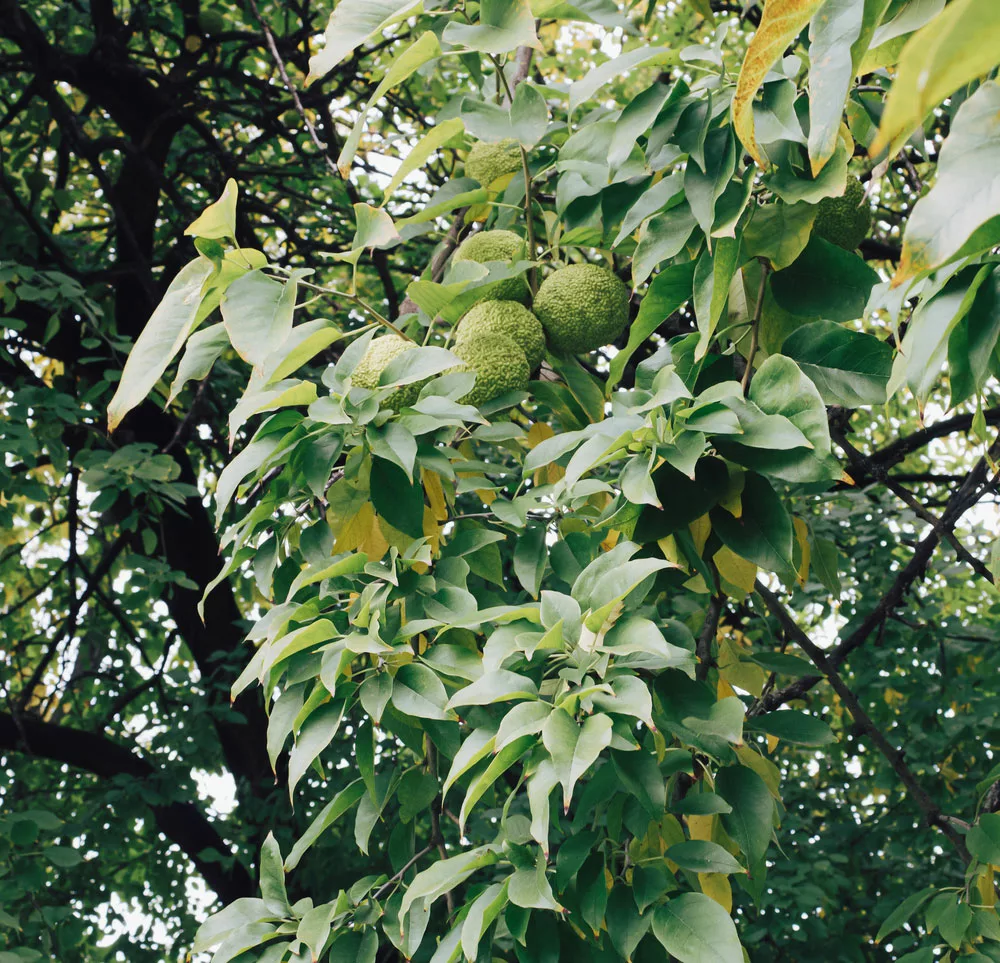
An Osage Orange Tree with Fruits.
There’s still a debate about whether Osage Orange is better than Gambel Oak regarding its heat outputs.
But, as per the table above,
Osage Orange is the hottest firewood, with its cord yielding up to 32.9 million BTUs/cord.
So hot is Osage Orange that it is even likely to destroy your firewood stove.
Also, you can easily split the firewood with an axe, especially while it is still green.
But once it dries, splitting becomes hard.
Gambel Oak
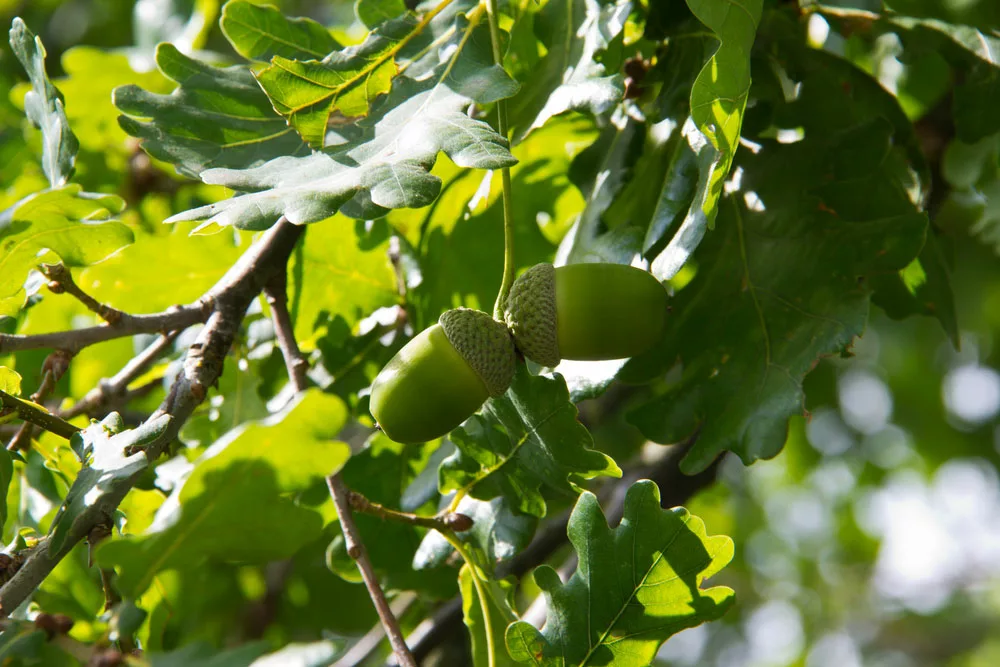
The Gambel oak tree’s green leaves.
The species does best in Southwest America areas such as Arizona and Utah, arguably among the hottest firewood trees.
Its cord has a BTU yield of 30.7 million, the highest heat output after Osage Orange.
You may also find others refer to it as Oak Brush or Scrub Oak.
However, it is not easy to break, especially when dry, as it has a stringy structure.
Black Locust
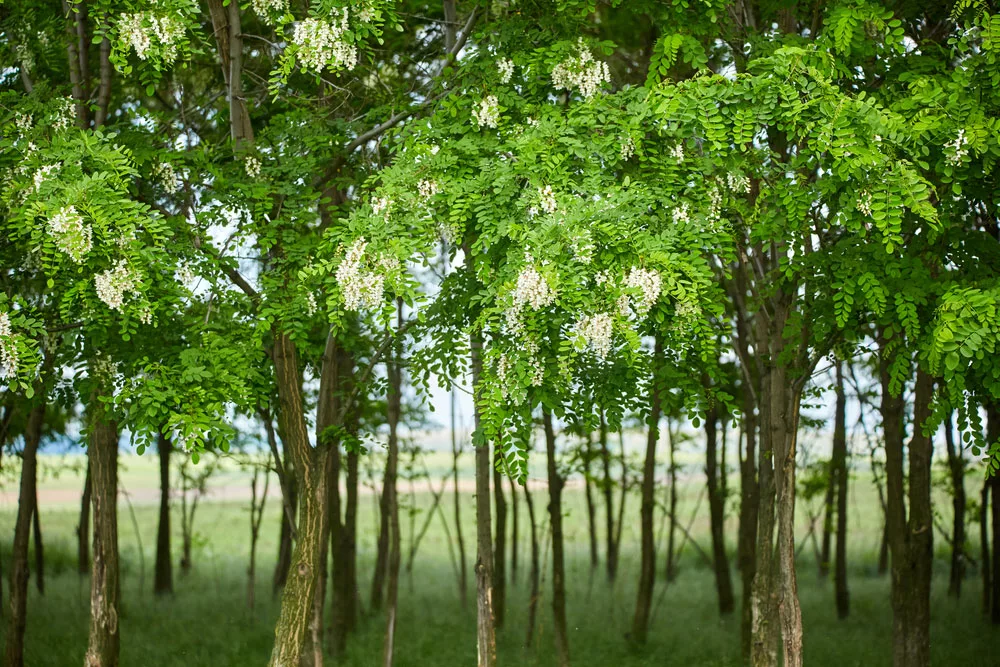
Black Locust Trees.
If you live in Midwest USA and want a good firewood tree for your winter stockpile, look no further than Black Locust.
It has a relatively good heat output at 29.3 million BTUs per cord of its firewood.
Besides, the wood is excellent for long-term storage as it doesn’t easily rot.
However, the tree is not easy to split while dry and relatively heavy.
It remains an excellent firewood tree with top-quality coals that burn slowly for a long time.
Hickory
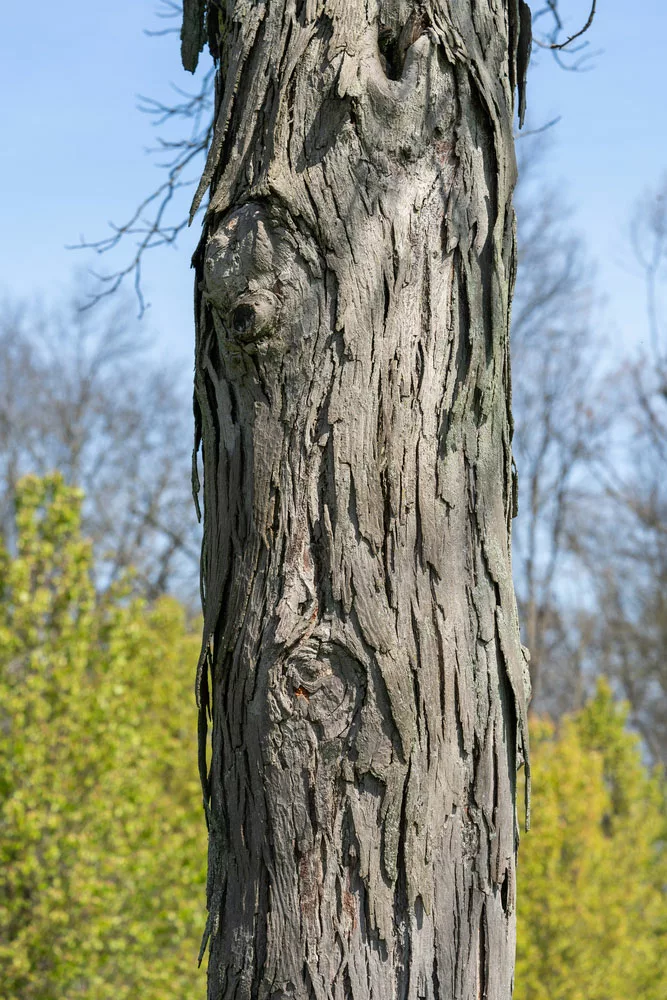
A Hickory Tree Trunk.
The firewood is renowned for its pleasant smell, making it ideal for smoking meat.
Hickory burns hotly, and its cord will give about 28.5 million BTUs.
Its sweet aroma and flavor make it suitable for outdoor fires and campfires.
Again, like Black Locust, this tree has excellent coals that burn hot for extensive periods.
Therefore, Hickory is a like-for-like alternative to Black Locust and other top firewood trees we’ve covered.
Beech
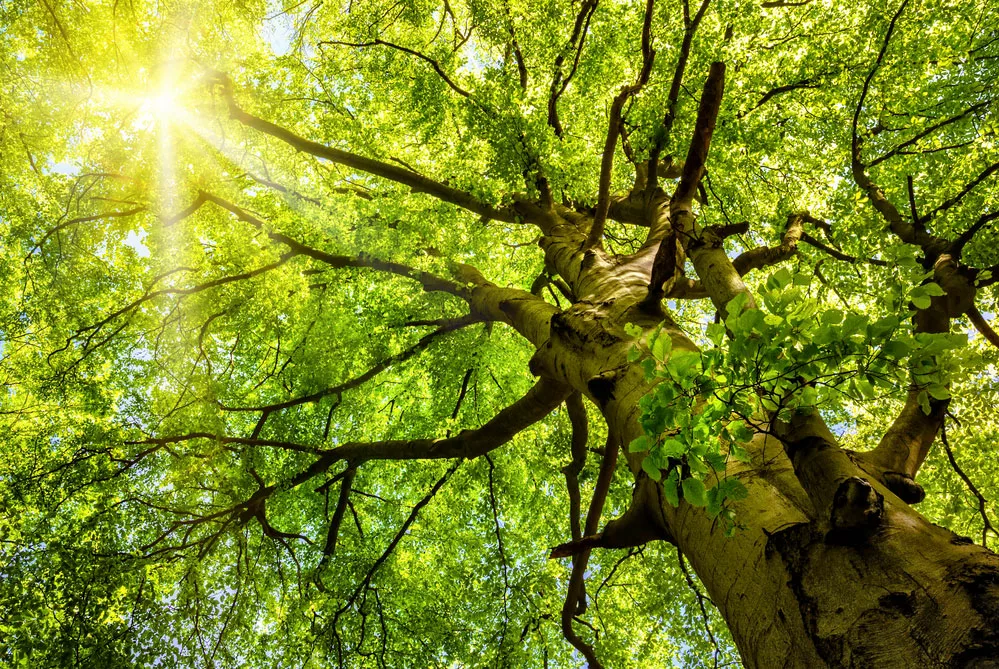
A Beech Tree.
A cord of this tree species produces a heat output of 27.5 million BTUs.
It would be best if you stacked more Beech firewood than the other tree species we’ve covered above.
Primarily, this is because this tree features a hollow trunk. Hence, a big portion of its stem is empty.
However, the coals quality of Beech firewood are top quality, and the tree is also not hard to split.
Eastern Hornbeam
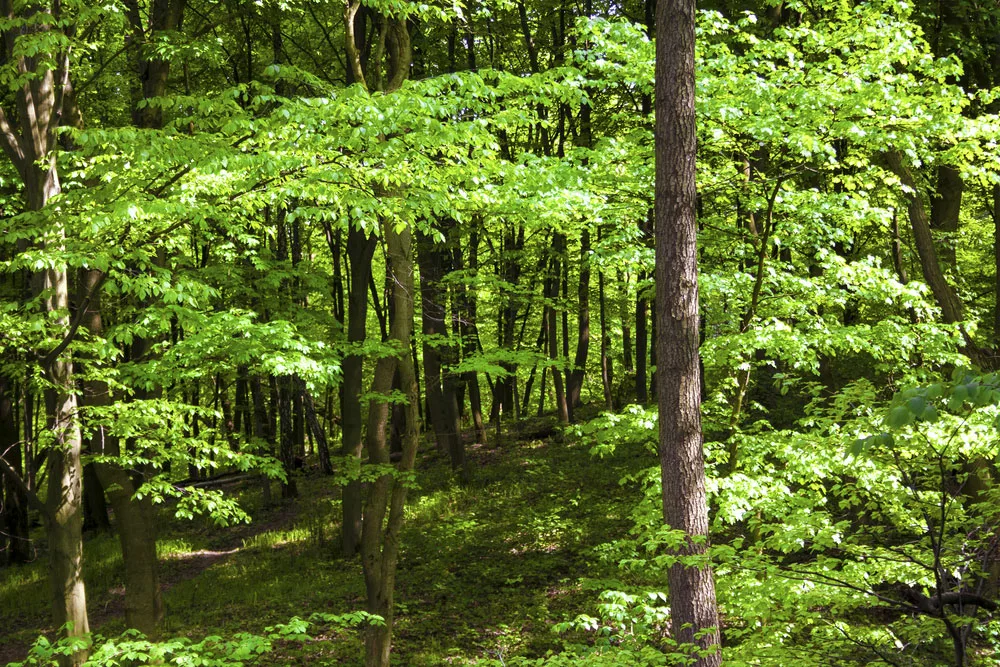
Hornbeam trees in spring.
Ironwood is the most common name for this tree, although some refer to it as the hophornbeam.
You will also find it in many parts of the US and UK, and it is a good firewood tree.
It has a high heat output of 27.1 million BTUs/cord and makes top-quality coals that burn slowly for an extensive period.
Also, the firewood doesn’t spark and pop, so it’s ideal for an indoor fireplace.
However, it is pretty hard to split by hand and takes quite some time to season thoroughly.
Despite these shortfalls, ironwood generally makes good firewood and yields little smoke, especially when thoroughly dried.
Pinyon Pine
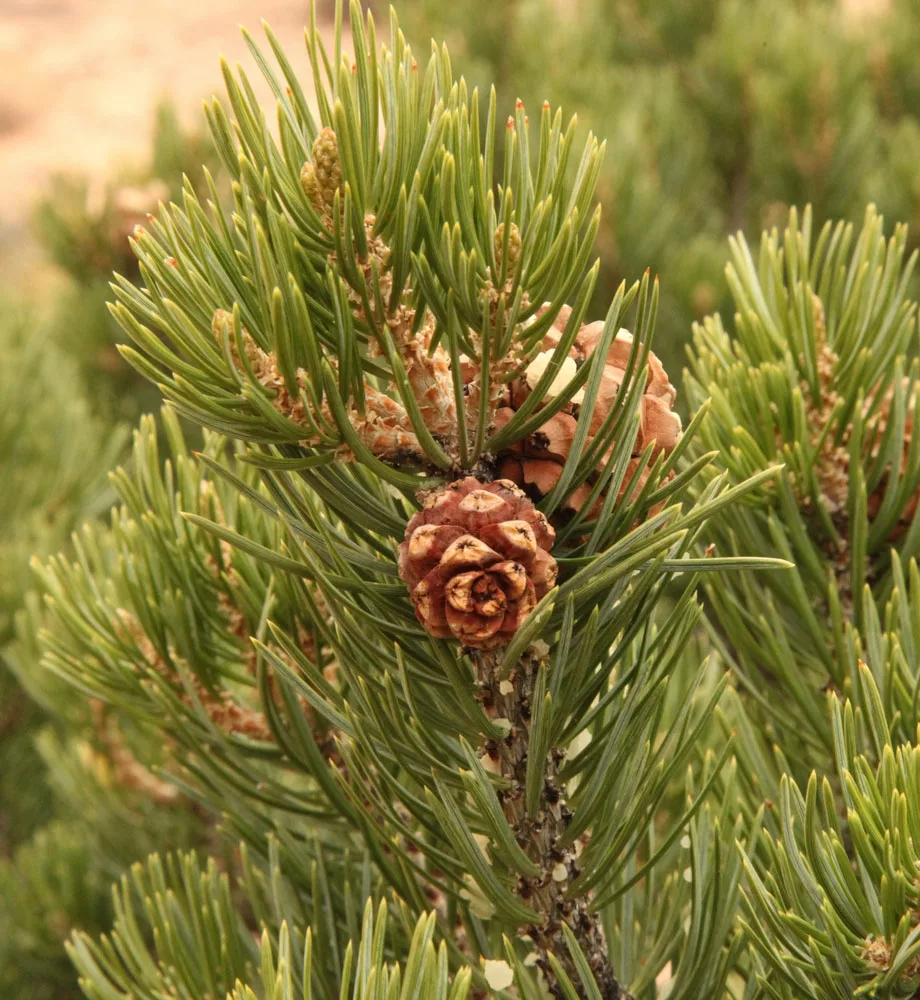
Two-Needle Pinyon (Pinus edulis) pine cone in Canyonlands National Park.
It is a pine species, meaning that its softwood.
Thus, its inclusion in this list is suspect, but it has a higher heat output than all softwood trees.
Pinyon Pine is the best softwood tree species, with a heat yield of about 27.1 million BTUs/cord.
It, therefore, fares better than other common softwood trees, such as cedar and White Pine, that burn so fast.
Pinyon Pine is also quite dense than these trees, but it is easy to split and has a sweet aroma.
Apple Wood
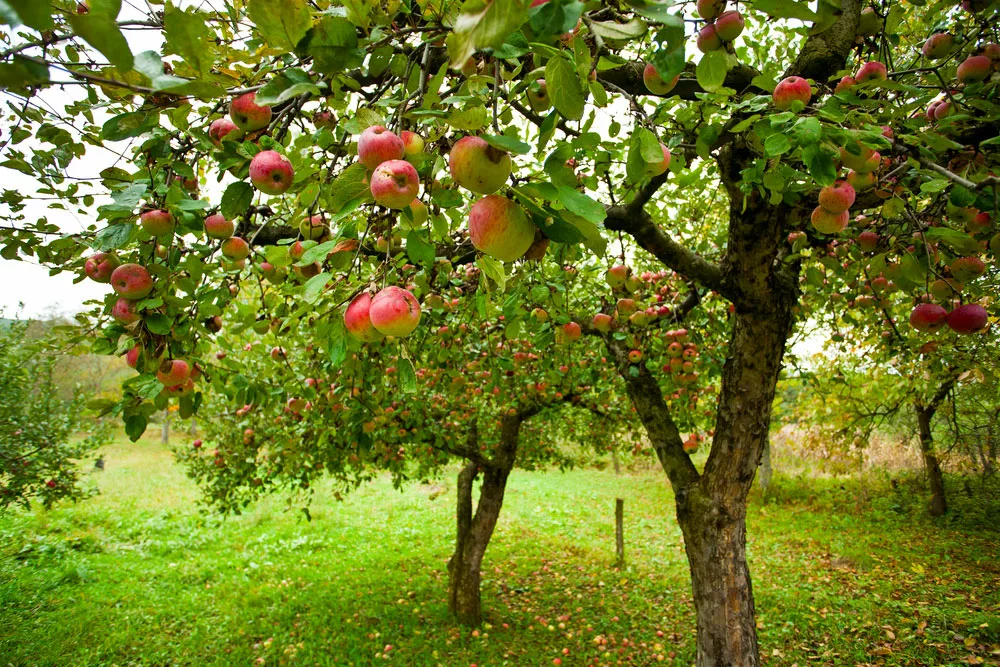
An apple orchard.
It’s the hottest fruit wood tree with 27.0 BTUs/cord yield. It also makes good quality coals, burns slowly, and yields a sweet smell like its fruits.
Thus, apple firewood is ideal for outdoor burning, especially on bonfires and barbecues.
Again, the firewood doesn’t spark while burning, so you can also use it indoors.
However, most present-day apple tree varieties are relatively short than in the past.
It means you need much more apple trees than you’d require for other species like Hickory.
However, if you’re looking for the best firewood to smoke your bacon, go for apple wood over hickory.
Black Birch
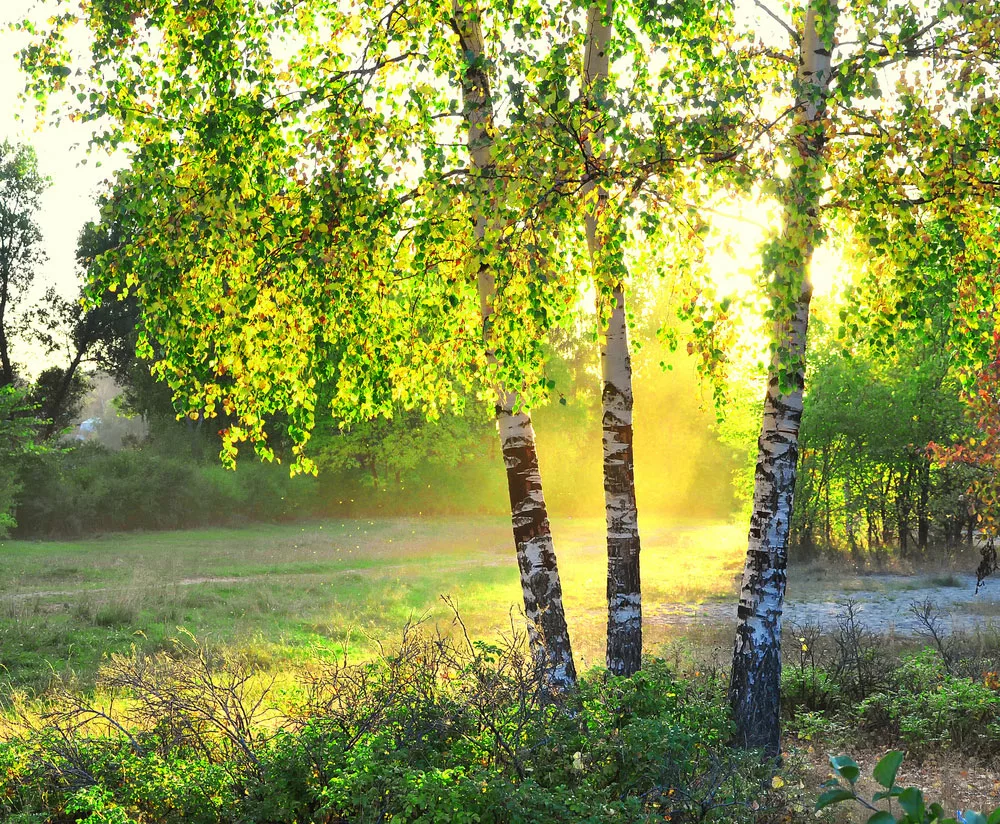
Birch Trees.
It is the densest of all birch varieties and the best firewood tree of the family, thanks to its high heat output.
Its cord has a heat yield of 26.8 BTUs, and it’s not too difficult to break, especially with a machine splitter.
Again, Black Birch seasons fast, probably within a year, especially if you split it before stacking.
So it would make an excellent addition to your winter stockpile, although its coals are not as good as other trees we’ve covered.
Blue Beech
The tree is an ironwood type, so its qualities are similar to those of other ironwoods, such as the Eastern Hornbeam.
However, the blue beech has a relatively lower heat output at 26.8.
It also makes excellent coals, and its burning qualities resemble those of top firewood trees.
Other Hottest Burning Woods
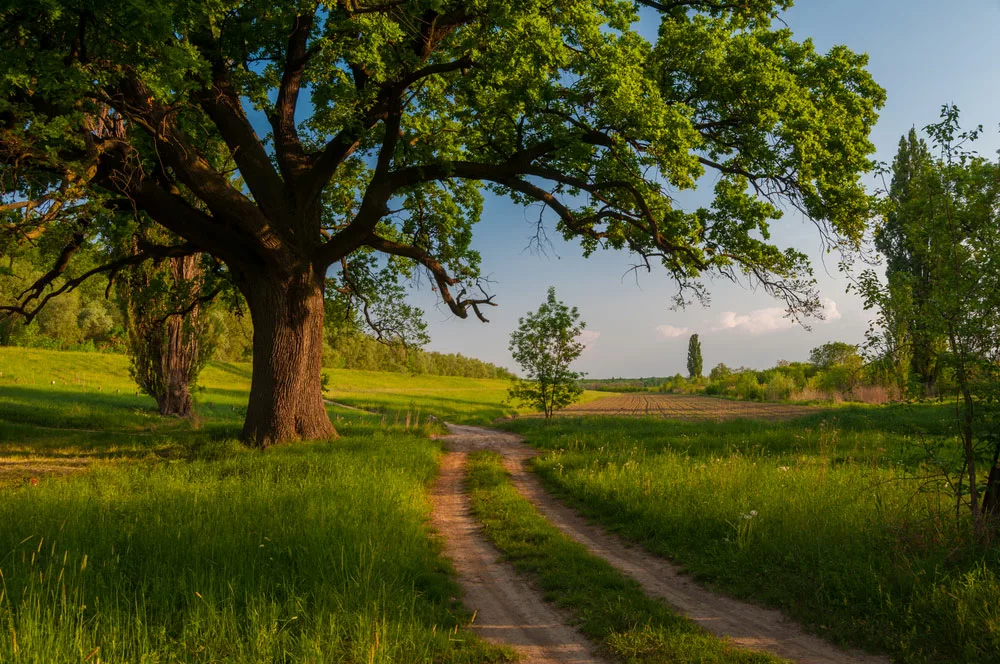
A gigantic white oak.
Other top firewood species are also quite hot but not good enough to make the top 10 list.
They include White Oak, Bur Oak, Mulberry, and Honey Locust. White Oak has the highest heat output, giving its cord 26.4 million BTUs.
The tree is also more popular firewood than its Gambel Oak counterpart in many American homes.
It is primarily because White Oak is readily available and grows bigger than Gambel Oak.
Conclusion
We’ve compiled the best firewood tree species regarding their heat output.
That’s all for now, but you can always contact us for more insights on firewood trees.
